Tepotinib
- CAS NO.:1100598-32-0
- Empirical Formula: C29H28N6O2
- Molecular Weight: 492.57
- MDL number: MFCD18452823
- SAFETY DATA SHEET (SDS)
- Update Date: 2025-12-25 11:31:46

What is Tepotinib?
Absorption
The absolute bioavailability of tepotinib following oral administration is approximately 72%. At the recommended dosage of 450mg once daily, the median Tmax is 8 hours and the mean steady-state Cmax and AUC0-24h were 1,291 ng/mL and 27,438 ng·h/mL, respectively.
Co-administration with a high-fat, high-calorie meal increases the AUC and Cmax of tepotinib by approximately 1.6-fold and 2-fold, respectively.
Toxicity
There are no data regarding overdosage of tepotinib. Symptoms of overdose are likely to be consistent with tepotinib's adverse effect profile and may therefore involve significant gastrointestinal symptoms, musculoskeletal pain, and laboratory abnormalities. Treatment of overdose should involve symptomatic and supportive measures. In the event of overdose, dialysis is unlikely to be of benefit given the high degree of plasma protein binding exhibited by tepotinib.
Description
Tepotinib is a highly selective inhibitor against MET. In xenograft models, acquired resistance to EGFR TKIs via secondary EGFR T790 M mutations can be overcome with tepotinib treatment.
The Uses of Tepotinib
EMD 1214063 is a novel ATP-comptetitive inhibitor of the MET hepatocyte growth factor receptor and a novel kinase inhibitor and a therapeutic agent for neuroblastoma. Potent c-MET inhibitor.
Indications
Tepotinib is indicated for the treatment of adult patients with metastatic non-small cell lung cancer (NSCLC) who have mesenchymal-epithelial transition (MET) exon 14 skipping alterations.
Background
Tepotinib is a MET tyrosine kinase inhibitor intended to treat a variety of MET-overexpressing solid tumors. It was originally developed in partnership between EMD Serono and the University of Texas M.D. Anderson Cancer Center in 2009 and has since been investigated in the treatment of neuroblastoma, gastric cancers, non-small cell lung cancer, and hepatocellular carcinoma. MET is a desirable target in the treatment of certain solid tumors as it appears to play a critical role, both directly and indirectly, in the growth and proliferation of tumors in which it is overexpressed and/or mutated.
Tepotinib was first approved in Japan in March 2020 for the treatment of non-small cell lung cancers (NSCLC) with MET alterations, and was subsequently granted accelerated approval by the US FDA in February 2021, under the brand name Tepmetko, for the treatment of adult patients with metastatic NSCLC and MET exon 14 skipping alterations. It is the first oral MET-targeted tyrosine kinase inhibitor to allow for once-daily dosing, an advantage that may aid in easing the pill burden often associated with chemotherapeutic regimens. In February 2022, tepotinib was approved for use in Europe.
brand name
Tepmetko
General Description
Class: receptor tyrosine kinase; Treatment: NSCLC with METex14; Other name: EMD-1214063; Oral bioavailability = 72%; Elimination half-life = 32 h; Protein binding = 94%
Mechanism of action
Tepotinib is a Kinase Inhibitor. The mechanism of action of tepotinib is as a Mesenchymal Epithelial Transition Inhibitor, and P-Glycoprotein Inhibitor.
Pharmacokinetics
Tepotinib is a highly-selective inhibitor of MET kinase activity, with an average IC50 of approximately 1.7 nmol/L. It has a moderate duration of action necessitating once-daily administration.
Tepotinib has been associated with the development of interstitial lung disease (ILD)/pneumonitis, which can sometimes be fatal. Patients should be monitored closely for signs of new or worsening respiratory symptoms (e.g. dyspnea, cough), and treatment with tepotinib should be immediately withheld if ILD/pneumonitis is suspected. If no other potential causes of ILD/pneumonitis are identified, therapy with tepotinib should be suspended indefinitely.
Pharmacology
Tepotinib is a highly-selective inhibitor of MET kinase activity, with an average IC50 of approximately 1.7 nmol/L. It has a moderate duration of action necessitating once-daily administration. Tepotinib has been associated with the development of interstitial lung disease (ILD)/pneumonitis, which can sometimes be fatal. Patients should be monitored closely for signs of new or worsening respiratory symptoms (e.g. dyspnea, cough), and treatment with tepotinib should be immediately withheld if ILD/pneumonitis is suspected. If no other potential causes of ILD/pneumonitis are identified, therapy with tepotinib should be suspended indefinitely.
Clinical Use
Tepotinib is currently being evaluated in combination with EGFR TKI gefitinib and also a separate trial in NSCLC patients with MET exon 14 skipping mutation and MET amplification.
Side Effects
- anxiety
- chest pain or tightness
- difficult or labored breathing
- dizziness or lightheadedness
- fast heartbeat
- fever or chills
- general feeling of discomfort or illness
- muscle or bone pain
Synthesis
The synthesis of Tepotinib is as follows:
Acetonitrile (700 ml) was added to the reaction vessel, and the compound represented by formula 7a (37.63 g, 0.1 mol), the compound represented by formula 8 (23.66 g, 0.12 mol), and potassium carbonate (34.55 g, 0.25 mol) were added under stirring.and tetrabutylammonium bromide (1.93g, 0.006mol), the reaction system was stirred and heated to reflux, and the reaction was stirred at reflux for 12h. After the reaction was completed, the temperature was cooled to room temperature, the reaction solution was concentrated under reduced pressure to dryness, and ethanol (360ml) was added. ), stir to dissolve, slowly add 1.5 mol/l hydrochloric acid aqueous solution dropwise, adjust the pH value to 1-2, cool down to 5-7 °C, stir and crystallize for 6 h, filter, and vacuum dry the solid at 45 °C for 6 h to obtain formula 1. The compound (44.42 g) was shown in a yield of 81.2% and a purity of 99.7% by HPLC.
Drug interactions
Tepotinib is indicated for the treatment of adult patients with metastatic non-small cell lung cancer (NSCLC) who have mesenchymal-epithelial transition (_MET_) exon 14 skipping alterations.
Metabolism
Tepotinib is metabolized primarily by CYP3A4 and CYP2C8, with some apparent contribution by unspecified UGT enzymes. The metabolite M506 is the major circulating metabolite, comprising approximately 40.4% of observed drug material in plasma, while the M668 glucuronide metabolite has been observed in plasma at much lower quantities (~4% of an orally administered dose). A total of 10 phase I and phase II metabolites have been detected following tepotinib administration, most of which are excreted in the feces.
Metabolism
Tepotinib is metabolized primarily by CYP3A4 and CYP2C8, with some apparent contribution by unspecified UGT enzymes. The metabolite M506 is the major circulating metabolite, comprising approximately 40.4% of observed drug material in plasma, while the M668 glucuronide metabolite has been observed in plasma at much lower quantities (~4% of an orally administered dose). A total of 10 phase I and phase II metabolites have been detected following tepotinib administration, most of which are excreted in the feces.
Properties of Tepotinib
| Boiling point: | 626.5±65.0 °C(Predicted) |
| Density | 1.25 |
| storage temp. | Store at -20°C |
| form | Solid |
| pka | 8.93±0.10(Predicted) |
| Water Solubility | ≥ 4.93 mg/mL in DMSO, <2.52 mg/mL in EtOH, <2.56 mg/mL in Water |
Safety information for Tepotinib
| Signal word | Warning |
| Pictogram(s) |
 Exclamation Mark Irritant GHS07 |
| GHS Hazard Statements |
H302:Acute toxicity,oral |
| Precautionary Statement Codes |
P280:Wear protective gloves/protective clothing/eye protection/face protection. P305+P351+P338:IF IN EYES: Rinse cautiously with water for several minutes. Remove contact lenses, if present and easy to do. Continuerinsing. |
Computed Descriptors for Tepotinib
New Products
Indole Methyl Resin tert-butyl 9-methoxy-3-azaspiro[5.5]undecane-3-carboxylate Boc-His(Boc)-OH 2-CTC Resin 4-Chloro-7-tosy1-7Hpyrrolo[2,3-d]pyrimidine 5,7-Dibromo-1H-indole 2,5-dichloro-N-hydroxy-4,6-dimethylpyridine-3-carboximidamide 2,2-Dimethoxy-7-azaspiro[3.5]nonane hydrochloride 4-chloromethyl-5-methyl-1,3-dioxol-2-one (DMDO-Cl) R-2-BENZYLOXY PROPIONIC ACID 1,1’-CARBONYLDIIMIDAZOLE 1,1’-CARBONYLDI (1,2-4 TRIAZOLE) N-METHYL INDAZOLE-3-CARBOXYLIC ACID 4-((2-hydroxyethyl)thio)benzoic acid 1-(TERT-BUTOXYCARBONYL)-2-PYRROLIDINONE Methyl 6-methylnicotinate 3-Pyridineacrylic acid tert-Butyl carbazate TETRAHYDRO-2H-PYRAN-3-OL 2-((4-morpholinophenylamino) (methylthio) methylene) malononitrile 3-(4-morpholinophenylamino)-5-amino-1H-pyrazole-4-carbonitrile 2,4-dihydroxybenzaldehyde 1,3-Diethyl-1,3-Diphenylurea Methyl 2-methylquinoline-6-carboxylateRelated products of tetrahydrofuran

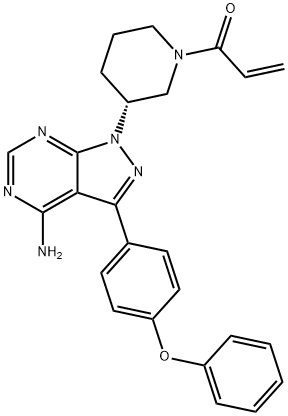
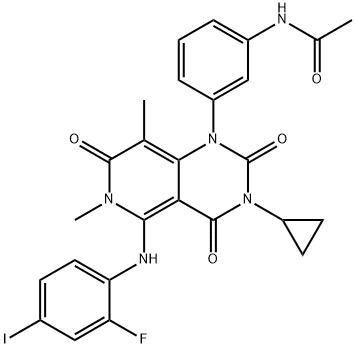
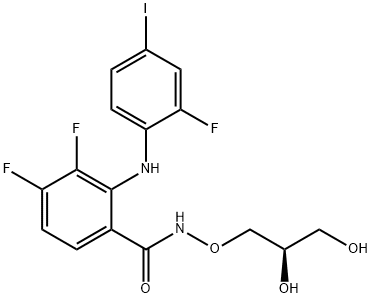
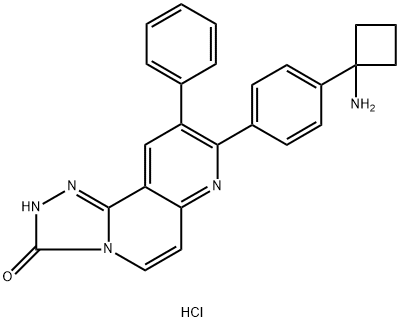
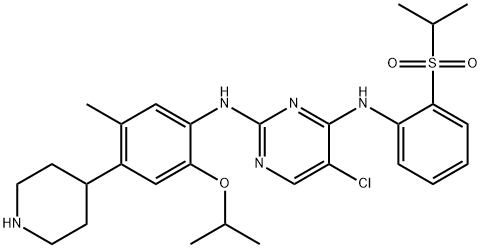

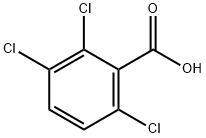
You may like
-
 1100598-32-0 Tepotinib 98%View Details
1100598-32-0 Tepotinib 98%View Details
1100598-32-0 -
 EMD 1214063 >95% CAS 1100598-32-0View Details
EMD 1214063 >95% CAS 1100598-32-0View Details
1100598-32-0 -
 Emd-1214063 95% CAS 1100598-32-0View Details
Emd-1214063 95% CAS 1100598-32-0View Details
1100598-32-0 -
 Pyridine 99.5% HPLC /UV SpectroscopyView Details
Pyridine 99.5% HPLC /UV SpectroscopyView Details
110-86-1 -
 Piperazine Spot supply, best priceView Details
Piperazine Spot supply, best priceView Details
110-85-0 -
 Dibutyl PhthalateView Details
Dibutyl PhthalateView Details
84-74-2 -
 Imidazole Spot supply, competitive priceView Details
Imidazole Spot supply, competitive priceView Details
288-32-4 -
 Thiourea 99% ARView Details
Thiourea 99% ARView Details
62-56-6
